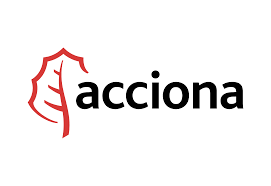The MABR habitat creates an ideal environment to support a very resilient biofilm that can withstand hydraulic shock loads and process upsets. The biofilm absorbs and consumes carbon and nitrogen based pollutants, but unlike conventional fixed film/biofilm systems (MBBR, RBC) it is incredibility energy efficient.
Our ‘drop-in’ technology increases the amount of wastewater that can be treated within the existing biological tank on site. Enhanced biological treatment performance, easy deployment and innovative biofilm control enables this.
A significant increase in oxygen transfer efficiency and overall aeration system efficiency, coupled with the ideal habitat for biofilm growth means our solution can help move plants away from a 100 year old energy-intense bubble design.
MABR system sludge age and biofilm layers help reduce the volume of waste sludge over conventional systems. Sludge transfer, storage, treatment and disposal costs are minimised. Fewer road tankers and less stress on our environment is a benefit to all.
In nature, biology grows static, attached in a fixed location. The evolution of the biology shows that this is the optimal conditions for biology to consume food (pollutants), gain oxygen and to grow. MABR allows biofilm to develop this way, as opposed to conventional systems that have the biology suspended in a tank, allowing the perfect habitat for the biofilm to treat waste in the water more effectively.
MABR use's hollow tubes to deliver oxygen directly to bacteria growing on the membranes, with little resistance. Conventional systems need lots of pressure to get air through the water to the suspended biology. This process is energy intensive and causes over 70% of the oxygen to never reach the bacteria that requires it to grow. MABR gives a low energy delivery of oxygen directly to the bacteria for maximum effectiveness.
When air passes through the hollow membranes the oxygen still needs to reach the biology outside of the walls, our competitors use pores for oxygen to pass through these walls which causes clogging and compromises the strength of the membranes. At OxyMem we use a special material that allows molecular diffusion to occur. This chemical reaction means oxygen passes through the walls, directly to the biofilm, without these compromising strength or risks of clogging.
After preliminary consultation and a review of current processes and goals our experienced team design a module that will be tailor-made to help you reach your objectives. The installation process takes a couple of days. We do not require tank draining, a stop in production, specialist staff training or additional infrastructure.
Important: If our installs do not meet your objectives or standards they can be removed just as easily, reverting you back to previous plant performance.
Biofilm control is important for biological performance when it grows it can become too thick, and the outer layer is old dying and not performing. If the biofilm has too many layers removed, then tanks are relying on infantile bacteria that ineffectively treat wastewater. Our patented biofilm thickness control removes just enough biofilm at the right time to ensure that the high performing bacteria is always in use. Click here to discover how it works.
Lower nitrogen concentration rates are essential for environmental standards. We need to improve the effluent quality of water discharged back into the environment. The OxyMem membranes effectively remove harmful nitrates produced in nitrification and denitrification processes. Total nitrogen concentrations of less than 5 mg per litre are possible without a re-circulation pump and a post denitrification reactor.




© Copyright 2017-19, OxyMem Limited | Company Registration No. 530400 | VAT Registration No. IE3192612NH | INBS